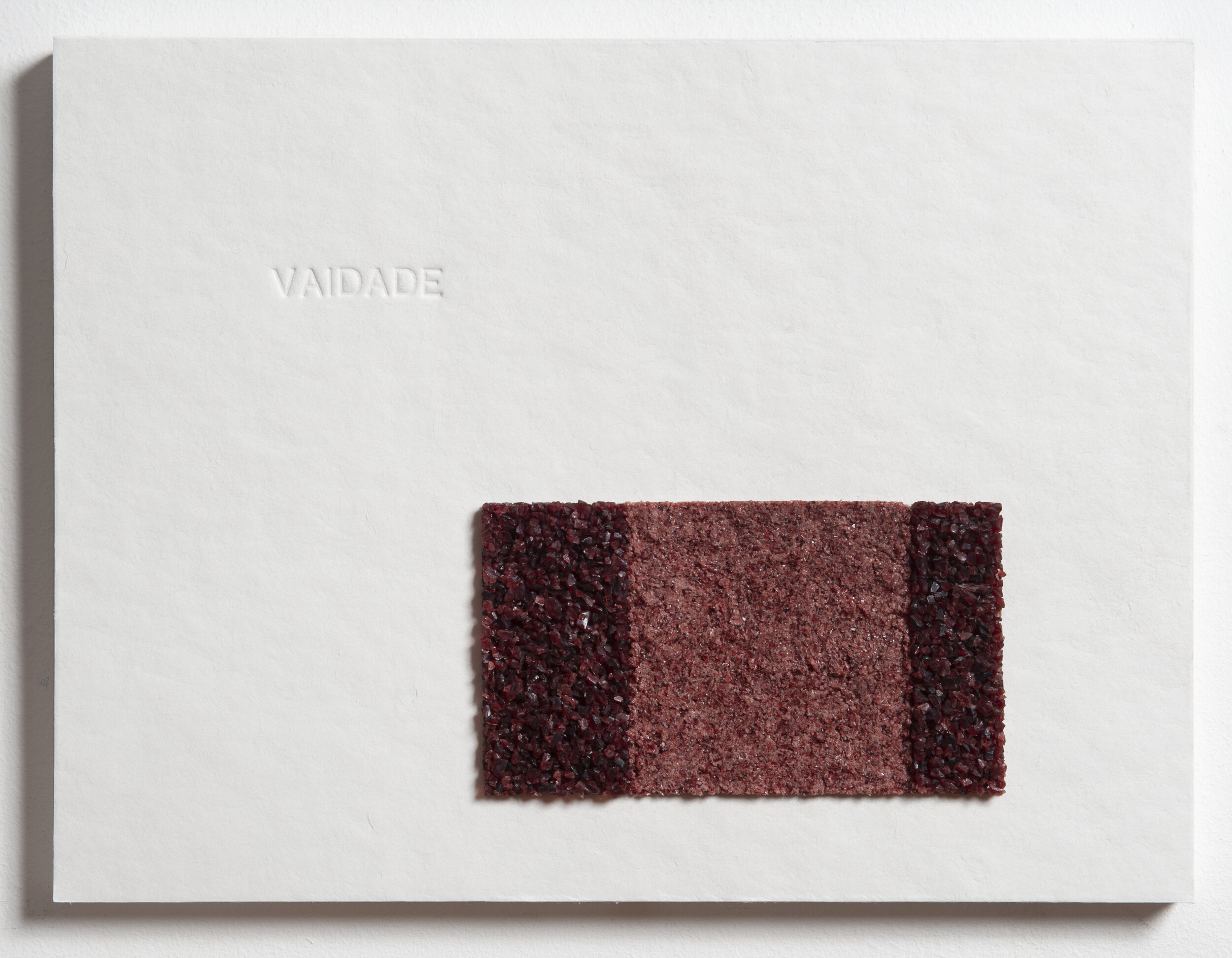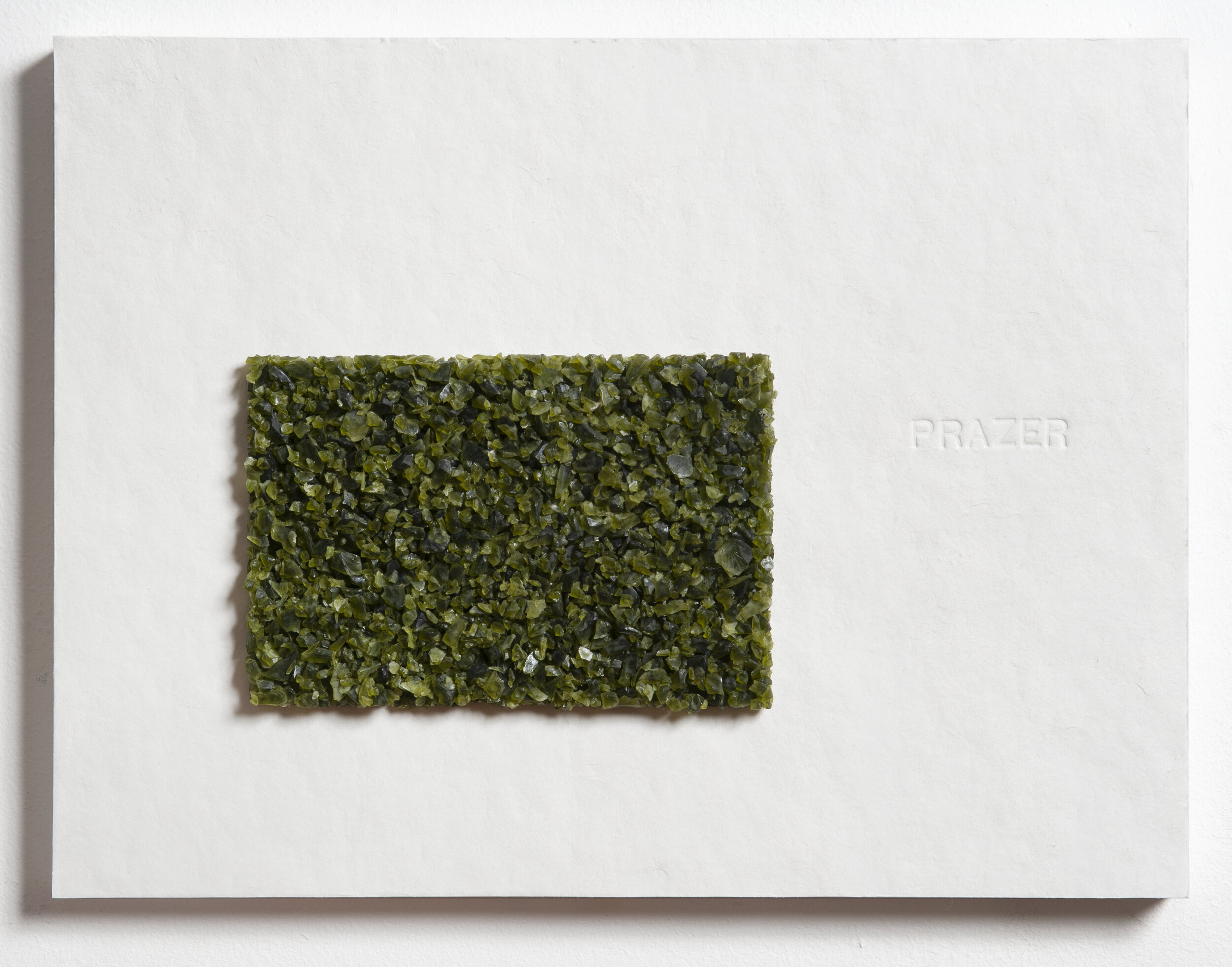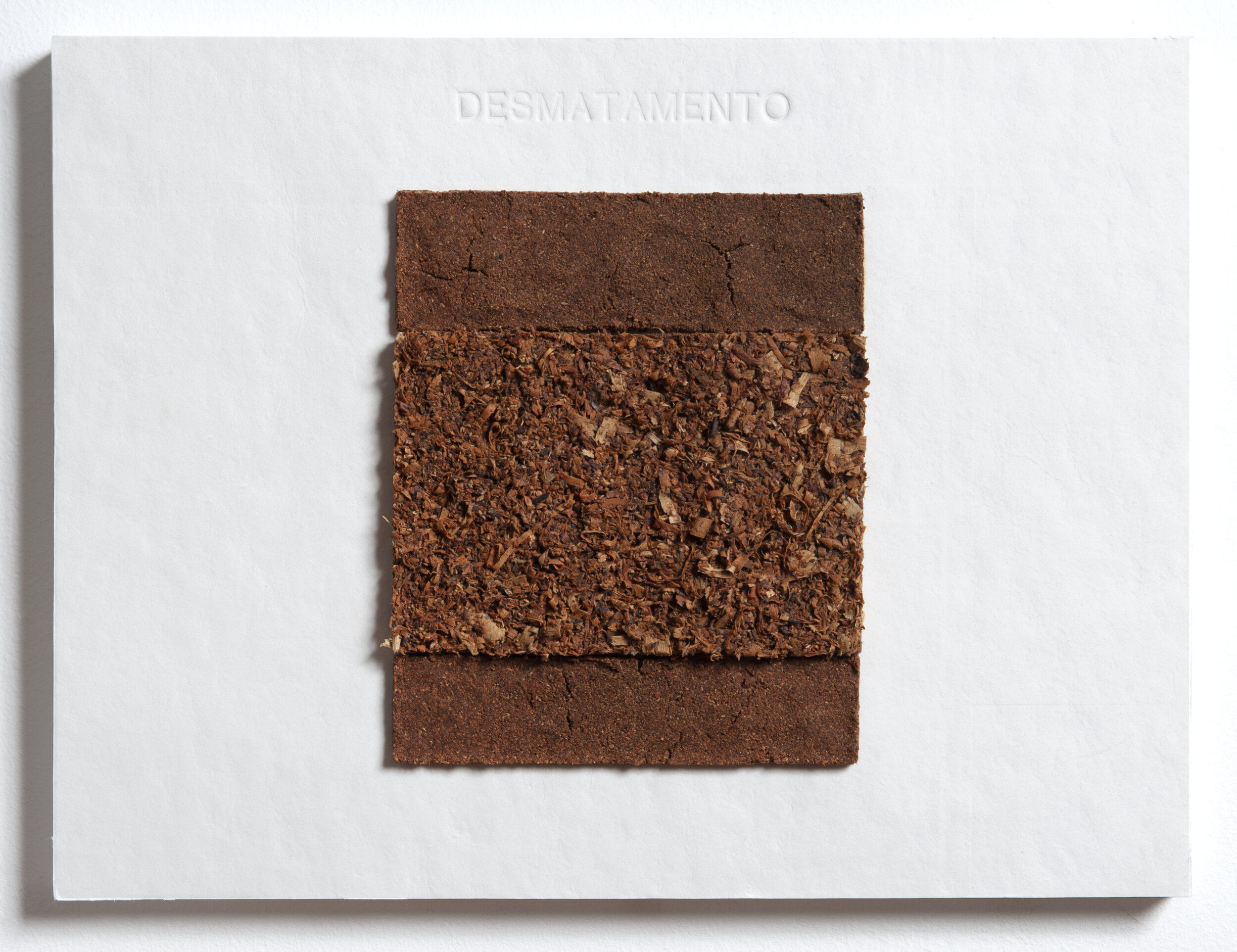GUARDANAPOS - EDGAR RACY
Ao observar o ateliê de Morandi e sua obra, Edgar olhou para seu acúmulo de materiais, que em algum momento teve sua serventia, mas que em outro passou a ser dispensável. Decidiu utilizar esses materiais em seus trabalhos, executando-os de uma maneira mais contemporânea. Não como Morandi, que comprava suas matérias-primas para executar seus trabalhos, mas mais como Camille Claudel, que retirava sua matéria-prima da lama das ruas de terra para criar suas esculturas. Para Edgar, a matéria-prima para o resultado de um trabalho é consequência de recolher e desmaterializar o objeto e dependendo do material, empregar bastante esforço físico. Somente após isso, o artista inicia a execução do trabalho, abstrato na maioria das vezes. Palavras... Algo faltava para expressar o esforço físico e o movimento matérico. Algo que tivesse relação com o material que antes era objeto e detinha uma função. Por que não nomear o trabalho com palavras relacionadas à função original que o objeto tinha antes de ser desmaterializado? A palavra surgiu. Muitas vezes com a simples relação com o objeto. Outras vezes com conotação crítica. Poderia ser simplesmente o título atribuído ao trabalho, mas Edgar decidiu que ela (a palavra) faria parte do resultado final.
A natureza é sábia. Reclama.
For many years coexisting with the endless waste of recyclable materials, Edgar found himself complaining about the subject one day. And all of a sudden, he decided to stop complaining and start taking action. In his house, he had accumulated hundreds of differently colored glass bottles, dozens of chipped plates, perfume bottles, bags full of sawdust, dozens of large heart of palm jars, piles of tiles, bricks, clay pots and so on.
When observing Morandi's studio and his work, Edgar looked at his accumulation of materials, which at one time was useful, but then became expendable. He decided to use those materials in his works, executing them in a more contemporary way. Though not like Morandi, who bought his raw materials to execute his work, but more like Camille Claudel, who retrieved his raw material from the mud of the dirt streets to create his sculptures.
For Edgar, the raw material as the result of a work is a consequence of collecting and dematerializing the object, and depending on the material, using a lot of physical effort. Only after that, the artist starts executing the work, being the latter abstract most of the time.
Words...
Something was missing to express the physical effort and the material movement. Something related to the material that was previously an object and had a purpose. Why not name the work with words related to the original purpose to what the object had before being dematerialized?
The word arose. Often with the simple relationship with the object. Other times with critical connotation.
It could simply be the title granted to the work, but Edgar decided that it (the word) would be part of the final result.
Nature is wise. It reclaims.
--




